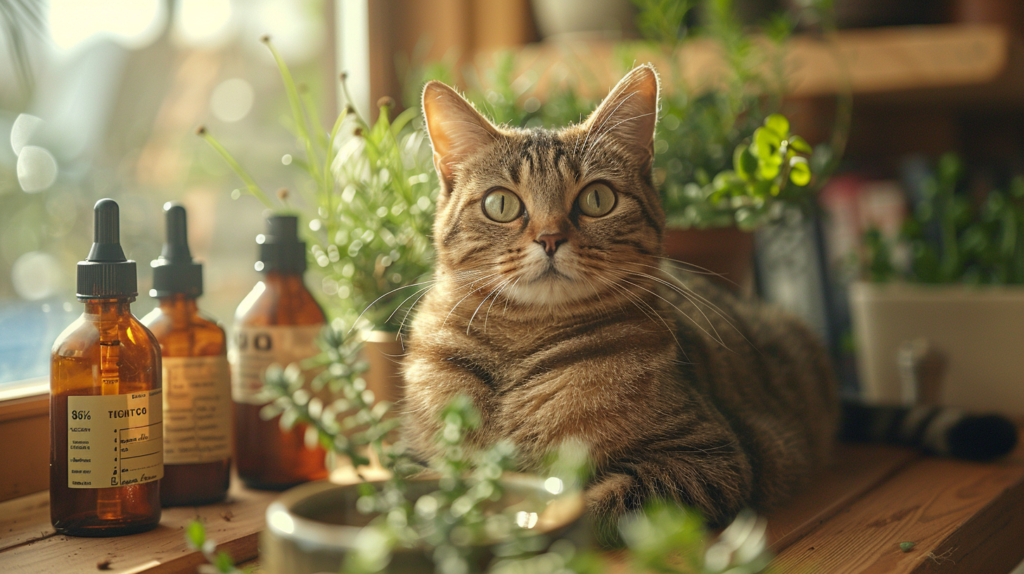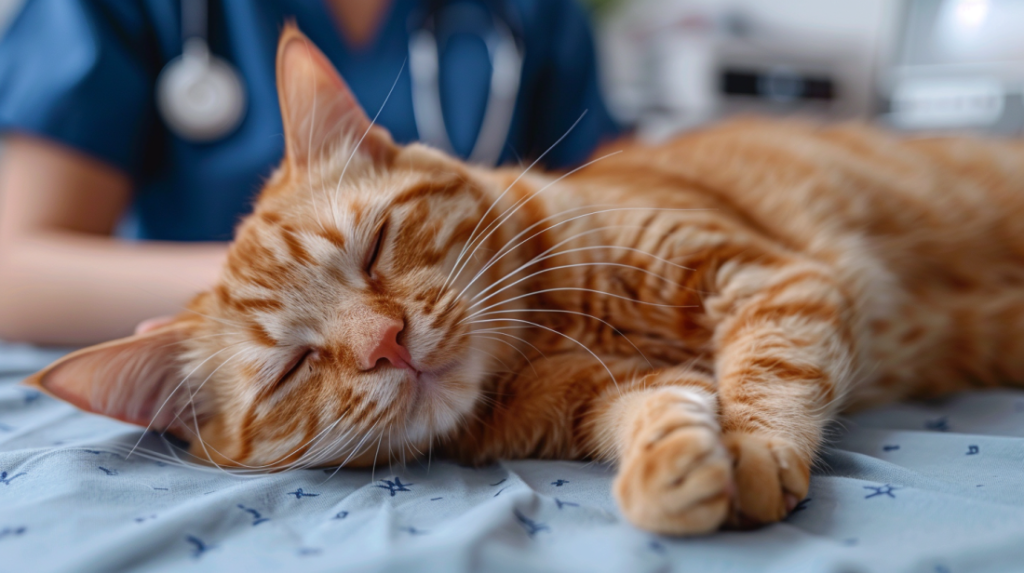Learn the 7 critical signs of cat poisoning every pet owner must recognize. Get expert tips on prevention, first aid, and when to seek emergency care for your feline friend.
Table of Contents
Every year, thousands of cats suffer from accidental poisoning, making it one of the most common pet emergencies veterinarians encounter. As a devoted cat owner, recognizing the early warning signs of cat poisoning could mean the difference between life and death for your beloved feline companion. Whether it’s from household cleaners, toxic plants, or human medications, cats are naturally curious creatures that can easily get into dangerous substances when we least expect it.
The statistics are sobering: according to the ASPCA Animal Poison Control Center, they handle over 200,000 poisoning cases annually, with cats representing approximately 20% of these emergencies. What makes this even more concerning is that many cat owners don’t realize their pet has been poisoned until symptoms become severe, often reducing the chances of successful treatment.
This comprehensive guide will equip you with the knowledge to identify the seven most critical signs of cat poisoning, understand common toxic substances, and take immediate action that could save your cat’s life. Remember, when it comes to poisoning, every minute counts, and early recognition is your cat’s best defense.
🚨 Critical Signs of Cat Poisoning
| Sign | Symptoms | Severity | Time Frame | Action Required |
|---|---|---|---|---|
| #1 Vomiting & Diarrhea | Sudden, repeated vomiting, watery or bloody diarrhea | High | 30 minutes – 2 hours | Immediate vet contact |
| #2 Breathing Issues | Labored breathing, wheezing, open-mouth breathing | Critical | Minutes to hours | Emergency care NOW |
| #3 Neurological Changes | Seizures, disorientation, unusual behavior | Critical | 30 minutes – 6 hours | Emergency care NOW |
| #4 Excessive Drooling | Heavy salivation, mouth pawing, oral irritation | High | Minutes to 1 hour | Immediate vet contact |
| #5 Lethargy & Weakness | Extreme tiredness, inability to stand, collapse | High | 1-6 hours | Urgent vet visit |
| #6 Urination Changes | No urination, excessive urination, blood in urine | Critical | 6-24 hours | Emergency care NOW |
| #7 Heart Rate Issues | Rapid/slow heart rate, weak pulse, cold extremities | Critical | 30 minutes – 4 hours | Emergency care NOW |
The Basics Every Owner Should Know

Cat poisoning occurs when your feline ingests, inhales, or comes into contact with a toxic substance that disrupts normal bodily functions. Unlike dogs, cats have unique metabolic characteristics that make them particularly vulnerable to certain toxins. Their liver lacks specific enzymes needed to process many common substances, making even small amounts of certain chemicals potentially lethal.
Common sources of cat poisoning include:
- Household cleaning products and chemicals
- Human medications (especially acetaminophen and ibuprofen)
- Toxic plants like lilies, azaleas, and poinsettias
- Essential oils and aromatherapy products
- Antifreeze and automotive fluids
- Pesticides and rodenticides
- Certain human foods (chocolate, onions, garlic, grapes)
The severity of poisoning depends on several factors: the type and amount of toxin consumed, your cat’s size and age, how quickly treatment begins, and your cat’s overall health status. Kittens, senior cats, and those with existing health conditions are typically at higher risk for severe complications.
Understanding these fundamentals helps explain why the following seven signs are so critical to recognize. Each symptom represents your cat’s body attempting to cope with or eliminate the toxic substance, and early intervention can significantly improve outcomes.
Sign #1: Sudden Vomiting and Diarrhea

Gastrointestinal distress is often the first and most noticeable sign of cat poisoning. When your cat’s digestive system encounters a toxic substance, it attempts to expel the threat through vomiting and diarrhea. However, not all stomach upset indicates poisoning, so understanding the specific characteristics of poison-related symptoms is crucial.
What to look for:
- Repeated vomiting episodes within a short timeframe
- Vomit containing blood, unusual colors, or foreign materials
- Severe diarrhea that may contain blood or mucus
- Simultaneous vomiting and diarrhea
- Inability to keep water down
Case Study: Luna, a 3-year-old domestic shorthair, began vomiting repeatedly after her owner used a new floor cleaner. Within two hours, she had vomited six times and developed bloody diarrhea. Her quick-thinking owner immediately contacted their veterinarian, and Luna received prompt treatment that prevented more serious complications.
The key distinction between normal stomach upset and poisoning-related symptoms is the severity and persistence. Poison-induced gastrointestinal distress typically worsens rapidly and doesn’t respond to typical remedies like withholding food or offering bland meals.
Immediate action steps:
- Remove any potential toxin source from your cat’s environment
- Do not induce vomiting unless specifically instructed by a veterinarian
- Collect a sample of vomit if possible for veterinary analysis
- Contact your veterinarian or pet poison control immediately
- Monitor your cat closely for additional symptoms
Sign #2: Difficulty Breathing and Respiratory Distress

Respiratory symptoms in cat poisoning cases can be particularly frightening and require immediate emergency attention. Many toxic substances can affect your cat’s respiratory system either directly (through inhalation) or indirectly (by affecting the nervous system or causing fluid buildup in the lungs).
Critical respiratory warning signs include:
- Labored or rapid breathing (panting in cats is unusual)
- Open-mouth breathing or gasping
- Blue or pale gums and tongue (cyanosis)
- Wheezing or unusual breathing sounds
- Inability to breathe normally when lying down
Certain toxins, such as those found in some essential oils, cleaning fumes, or carbon monoxide, can directly damage lung tissue or interfere with oxygen transport in the blood. Other poisons may cause fluid accumulation in the lungs or affect the brain’s respiratory control centers.
Expert insight: Dr. Sarah Mitchell, DVM, emergency veterinarian at City Animal Hospital, explains: “Respiratory distress in cats is always an emergency, but when combined with other poisoning symptoms, immediate intervention is critical. Cats hide illness well, so by the time breathing problems are visible, the situation is already serious.”
Environmental factors to consider:
- Recent use of aerosol products or air fresheners
- Access to cleaning supplies or chemicals
- Exposure to car exhaust or generator fumes
- New plants or flowers in the home
- Changes in household products or routines
If you observe any respiratory distress in your cat, especially in combination with other symptoms, seek emergency veterinary care immediately. This is not a wait-and-see situation.
Sign #3: Neurological Symptoms and Behavioral Changes

The nervous system is particularly sensitive to many toxins, making neurological symptoms some of the most serious signs of cat poisoning. These symptoms can range from subtle behavioral changes to dramatic seizures, depending on the type and amount of poison involved.
Neurological warning signs to watch for:
Mild to Moderate Symptoms:
- Confusion or disorientation
- Loss of coordination (ataxia)
- Tremors or muscle twitching
- Excessive drooling
- Dilated or constricted pupils
- Head tilting or circling behavior
Severe Symptoms:
- Seizures or convulsions
- Loss of consciousness
- Paralysis or inability to move
- Coma-like state
- Severe muscle rigidity or spasms
Common toxins affecting the nervous system:
- Antifreeze (ethylene glycol)
- Certain pesticides and insecticides
- Some human medications (antidepressants, sedatives)
- Alcohol-containing products
- Heavy metals (lead, mercury)
- Certain plants (marijuana, cycads)
Real-world example: Max, a 5-year-old tabby cat, began showing subtle signs of confusion and loss of coordination after his owner treated the garage floor with a new sealant. Initially dismissed as normal behavior, Max’s symptoms progressed to include tremors and difficulty walking. Emergency treatment revealed antifreeze poisoning from residue on his paws, emphasizing how quickly neurological symptoms can escalate.
The challenge with neurological symptoms is that they can be subtle initially, and cats naturally hide signs of illness. Pet owners should trust their instincts—if your cat seems “off” or is behaving unusually, especially after potential toxin exposure, don’t hesitate to seek veterinary advice.
Sign #4: Excessive Drooling and Oral Irritation

While cats occasionally drool during particularly relaxing moments, excessive or sudden drooling often indicates cat poisoning, particularly when the toxin has caused oral or throat irritation. This symptom is especially common when cats have licked or ingested caustic substances.
Oral poisoning symptoms include:
- Excessive drooling or hypersalivation
- Pawing at the mouth or face
- Difficulty swallowing
- Red, swollen, or burned-looking gums and tongue
- Refusal to eat or drink
- Mouth breathing due to oral pain
Common oral irritants that cause poisoning:
- Household cleaners (bleach, ammonia-based products)
- Certain houseplants (dieffenbachia, philodendron)
- Essential oils applied topically or diffused
- Flea and tick treatments not designed for cats
- Battery acid or other corrosive materials
- Certain human toothpastes containing xylitol
Veterinary perspective: Dr. James Rodriguez, a feline specialist with 15 years of experience, notes: “Oral symptoms in cat poisoning cases are particularly concerning because they indicate direct tissue damage. Unlike systemic poisoning that affects organs gradually, caustic substances can cause immediate and potentially permanent damage to the mouth, throat, and esophagus.”
What NOT to do:
- Don’t try to rinse your cat’s mouth with water (this can worsen some chemical burns)
- Avoid giving milk or other home remedies
- Don’t attempt to induce vomiting if oral burns are suspected
- Never try to neutralize the poison with other substances
Instead, contact your veterinarian immediately and follow their specific instructions. Time is critical when dealing with caustic poisoning, as delayed treatment can result in permanent damage to your cat’s mouth and throat.
Sign #5: Lethargy, Weakness, and Collapse

A sudden onset of severe lethargy or weakness is a serious indicator of cat poisoning that demands immediate attention. While cats sleep 12-16 hours daily, poisoning-related lethargy is distinctly different from normal rest patterns and often progresses rapidly.
Key characteristics of poison-induced lethargy:
- Sudden onset of extreme tiredness
- Inability or reluctance to move
- Weakness in limbs or overall body
- Collapse or falling over
- Unresponsiveness to normal stimuli (calling their name, food, treats)
- Hiding in unusual places and refusing to come out
Why toxins cause weakness: Many poisons interfere with cellular energy production, oxygen transport, or nervous system function, leading to profound weakness. Some toxins specifically target the cardiovascular system, reducing blood flow and oxygen delivery to muscles and organs.
Case example: Bella, a 7-year-old Persian cat, suddenly became extremely lethargic after her owner used a new carpet cleaning product. Within four hours, she progressed from mild tiredness to being unable to stand. Emergency blood work revealed significant liver enzyme elevation, and aggressive treatment prevented liver failure. Bella’s case highlights how quickly weakness can progress in poisoning situations.
Comparison chart: Normal tiredness vs. Poisoning lethargy
| Normal Cat Tiredness | Poisoning-Related Lethargy |
| Responds to food/treats | No interest or response |
| Normal sleep-wake cycles | Continuous unresponsiveness |
| Can be easily awakened | Difficult to rouse |
| Normal body posture when awake | Abnormal posture, difficulty standing |
| Gradual onset | Sudden, rapid onset |
| Associated with normal activities | No obvious trigger or unusual timing |
When to seek emergency care:
- If lethargy appears suddenly and severely
- When weakness is accompanied by other symptoms
- If your cat cannot or will not stand
- When normal stimuli don’t elicit responses
- If you suspect any toxin exposure in the past 24 hours
Remember, cats instinctively hide illness, so visible weakness indicates a serious problem requiring professional evaluation.
Sign #6: Changes in Urination and Kidney Function

The kidneys are particularly vulnerable to many toxins, making changes in urination patterns a critical sign of cat poisoning. Kidney damage from poisoning can be rapid and potentially irreversible, making early recognition essential for successful treatment.
Urinary symptoms indicating possible poisoning:
- Increased urination (polyuria) or decreased urination (oliguria)
- Straining to urinate or inability to urinate
- Blood in urine (hematuria)
- Strong ammonia smell to urine
- Accidents outside the litter box (unusual for house-trained cats)
- Excessive water consumption (polydipsia)
Toxins commonly affecting kidney function:
- Lilies (especially Easter, Tiger, and Asiatic lilies – extremely toxic to cats)
- Antifreeze (ethylene glycol)
- Certain human medications (NSAIDs, ACE inhibitors)
- Grapes and raisins
- Some mushroom species
- Heavy metals
- Certain cleaning products
The lily poisoning crisis: Lily poisoning deserves special attention as it’s one of the most dangerous toxins for cats. Even small amounts of lily pollen, leaves, or water from lily arrangements can cause rapid kidney failure. Dr. Amanda Foster, a veterinary toxicologist, states: “Lily poisoning in cats is a true emergency. We have a very narrow window to prevent irreversible kidney damage, sometimes as little as 6-12 hours from exposure.”
Monitoring your cat’s urination:
- Know your cat’s normal litter box habits
- Check litter boxes daily for changes in amount or appearance
- Monitor water consumption (sudden increases are concerning)
- Watch for behavioral changes around the litter box
- Note any vocalization during urination (may indicate pain)
Emergency indicators:
- Complete inability to urinate (medical emergency)
- Blood in urine combined with other symptoms
- Dramatic increase or decrease in urination
- Signs of pain during urination
- Lethargy combined with urinary changes
Kidney damage from poisoning can be subtle initially but progress rapidly. When in doubt, contact your veterinarian for guidance, especially if you suspect exposure to known kidney toxins.
Sign #7: Abnormal Heart Rate and Circulation Issues

Cardiovascular symptoms represent some of the most dangerous signs of cat poisoning and often indicate advanced toxicity requiring immediate emergency intervention. Many toxins directly affect heart function or blood circulation, potentially leading to life-threatening complications.
Cardiovascular warning signs:
- Abnormally fast heart rate (tachycardia) – normal cat heart rate is 120-140 beats per minute
- Unusually slow heart rate (bradycardia)
- Irregular heartbeat or rhythm
- Weak pulse
- Pale or blue gums and tongue
- Cold extremities (ears, paws, tail tip)
- Collapse or fainting episodes
How to check your cat’s vital signs:
Heart Rate Check:
- Place your hand on your cat’s chest, just behind the front leg
- Count beats for 15 seconds and multiply by 4
- Normal resting rate: 120-140 beats per minute
- During stress or illness, rates may be higher, but extremely fast (>200) or slow (<100) rates are concerning
Gum Color Assessment:
- Gently lift your cat’s upper lip
- Press your finger against the gums and release
- Normal gums should be pink and return to pink color within 1-2 seconds after pressure
- Pale, white, blue, or yellow gums indicate serious problems
Toxins affecting cardiovascular function:
- Chocolate (theobromine toxicity)
- Certain human heart medications
- Some plants (foxglove, oleander)
- Caffeine-containing products
- Some pesticides and insecticides
- Antifreeze in advanced stages
- Carbon monoxide
Critical case study: Tiger, a 4-year-old orange tabby, developed a rapid heart rate and pale gums after getting into his owner’s chocolate stash. His heart rate reached 220 beats per minute, and he required intensive cardiac monitoring and treatment. This case demonstrates how quickly cardiovascular symptoms can develop and why they require immediate professional care.
Emergency protocol for cardiovascular symptoms:
- Check heart rate and gum color
- Keep your cat calm and limit movement
- Contact emergency veterinary services immediately
- Prepare for immediate transport
- Monitor breathing and consciousness during transport
- Have information ready about possible toxin exposure
Cardiovascular symptoms often indicate that the toxin has entered the bloodstream and is affecting multiple organ systems. These cases typically require intensive treatment and monitoring, making early recognition and prompt veterinary care crucial for survival.
☠️ Common Cat Toxins & Response Times
| Toxin | Common Sources | Symptom Onset | Danger Level | Primary Effects |
|---|---|---|---|---|
| Antifreeze | Car radiators, windshield washer fluid | 30 minutes – 2 hours | Extreme | Kidney failure, neurological damage |
| Lilies | Easter lilies, tiger lilies, day lilies | 6-12 hours | Extreme | Acute kidney failure |
| Chocolate | Dark chocolate, baking chocolate, cocoa | 1-4 hours | High | Heart arrhythmias, seizures |
| Onions/Garlic | Cooking ingredients, baby food, seasonings | 1-3 days | High | Anemia, red blood cell damage |
| Xylitol | Sugar-free gum, diet foods, medications | 15-30 minutes | Extreme | Hypoglycemia, liver failure |
| Rat Poison | Rodenticides, bait stations | 12-48 hours | Extreme | Internal bleeding, blood clotting issues |
| Essential Oils | Tea tree, eucalyptus, citrus oils | 2-8 hours | Moderate | Liver toxicity, skin irritation |
| Acetaminophen | Tylenol, pain relievers | 1-4 hours | Extreme | Liver damage, methemoglobinemia |
When to Contact Emergency Services: A Decision Tree
Knowing when to seek immediate emergency care versus scheduling a regular veterinary appointment can be challenging. Here’s a clear decision-making framework for cat poisoning situations:
IMMEDIATE EMERGENCY (call now, transport immediately):
- Difficulty breathing or respiratory distress
- Seizures, convulsions, or loss of consciousness
- Inability to urinate or defecate
- Collapse or inability to stand
- Blue or white gums
- Severe vomiting (more than 3 times in an hour)
- Known ingestion of highly toxic substances (lilies, antifreeze, human medications)
URGENT CARE (call veterinarian within 1-2 hours):
- Persistent vomiting or diarrhea
- Lethargy combined with other symptoms
- Changes in urination patterns
- Excessive drooling with oral irritation
- Mild neurological symptoms (confusion, mild tremors)
- Suspected toxin exposure with developing symptoms
MONITORING SITUATION (call for advice, may schedule appointment):
- Single episode of vomiting with no other symptoms
- Mild behavioral changes without other signs
- Suspected minimal exposure to low-toxicity substances
- Historical exposure with no current symptoms
🚑 Emergency Action & Prevention Guide
| Step | Action Type | What To Do | What NOT To Do | Time Critical |
|---|---|---|---|---|
| 1 | Immediate Response | Remove cat from toxin source, assess breathing | Don’t induce vomiting without vet guidance | 0-2 minutes |
| 2 | Contact Help | Call vet/poison control immediately | Don’t wait to see if symptoms improve | 2-5 minutes |
| 3 | Information Gathering | Collect toxin package, note time/amount | Don’t give food or water unless instructed | 5-10 minutes |
| 4 | Transport Preparation | Secure cat in carrier, bring toxin sample | Don’t give home remedies or medications | 10-15 minutes |
| 5 | Prevention – Kitchen | Store foods in sealed containers, use pet-safe cleaners | Don’t leave chocolate, onions, grapes accessible | Daily habit |
| 6 | Prevention – Plants | Research plants before bringing home | Don’t assume flowers/plants are safe | Before purchase |
| 7 | Prevention – Chemicals | Lock cabinets, use pet-safe alternatives | Don’t leave antifreeze, medications accessible | Weekly check |
| 8 | Emergency Contacts | Keep vet, poison control numbers handy | Don’t rely on internet search during emergency | Setup once |
Prevention Strategies: Keeping Your Cat Safe
Prevention remains the most effective approach to avoiding cat poisoning. Creating a cat-safe environment requires ongoing vigilance and regular assessment of potential hazards.
Room-by-room safety checklist:
Kitchen:
- Store all medications in secure cabinets
- Keep chocolate, coffee, and toxic foods out of reach
- Secure cleaning products under sinks
- Remove toxic plants from windowsills
- Cover garbage cans with tight-fitting lids
Bathroom:
- Store toiletries and medications in closed cabinets
- Keep toilet lids down (especially if using bowl cleaners)
- Secure hair products and cosmetics
- Remove essential oil diffusers or use cat-safe alternatives
Living Areas:
- Choose cat-safe houseplants
- Store candles and air fresheners safely
- Secure electrical cords and small objects
- Keep human food and drinks out of reach
Garage/Basement:
- Store automotive fluids in sealed containers on high shelves
- Secure pesticides, fertilizers, and garden chemicals
- Clean up antifreeze spills immediately and thoroughly
- Use pet-safe alternatives when possible
Creating an emergency action plan:
- Post emergency contact numbers in visible locations
- Keep a list of nearby 24-hour veterinary clinics
- Maintain a pet first-aid kit
- Know the location of your nearest emergency veterinary hospital
- Keep your veterinarian’s and poison control contact information easily accessible
For more expert pet care tips and product recommendations, visit BlithePet.com — your trusted source for pet wellness.
❓ Frequently Asked Questions About Cat Poisoning
Conclusion:
Your Cat’s Life Depends on Quick Recognition
Recognizing the seven critical signs of cat poisoning – gastrointestinal distress, respiratory problems, neurological symptoms, oral irritation, lethargy, urinary changes, and cardiovascular issues – can mean the difference between life and death for your feline companion. Each symptom represents your cat’s body struggling to cope with toxic substances, and your quick response provides the best chance for successful treatment.
Remember that cats are masters at hiding illness, so visible symptoms often indicate a serious situation requiring immediate attention. Trust your instincts as a pet owner – if something seems wrong, especially after potential toxin exposure, don’t hesitate to seek professional help. The cost and stress of an emergency veterinary visit pale in comparison to the potential loss of your beloved pet.
Prevention through creating a cat-safe environment, combined with knowledge of these warning signs, forms your best defense against poisoning emergencies. Regular assessment of your home for potential hazards, proper storage of toxic substances, and maintaining emergency contact information ensures you’re prepared for any situation.
The bond between you and your cat is irreplaceable, and your vigilance in recognizing these critical signs demonstrates the depth of your care and commitment to their wellbeing. Stay informed, stay prepared, and remember that when it comes to suspected poisoning, it’s always better to err on the side of caution.
Have a similar experience with your pet? Share it in the comments below!






Leave a Reply